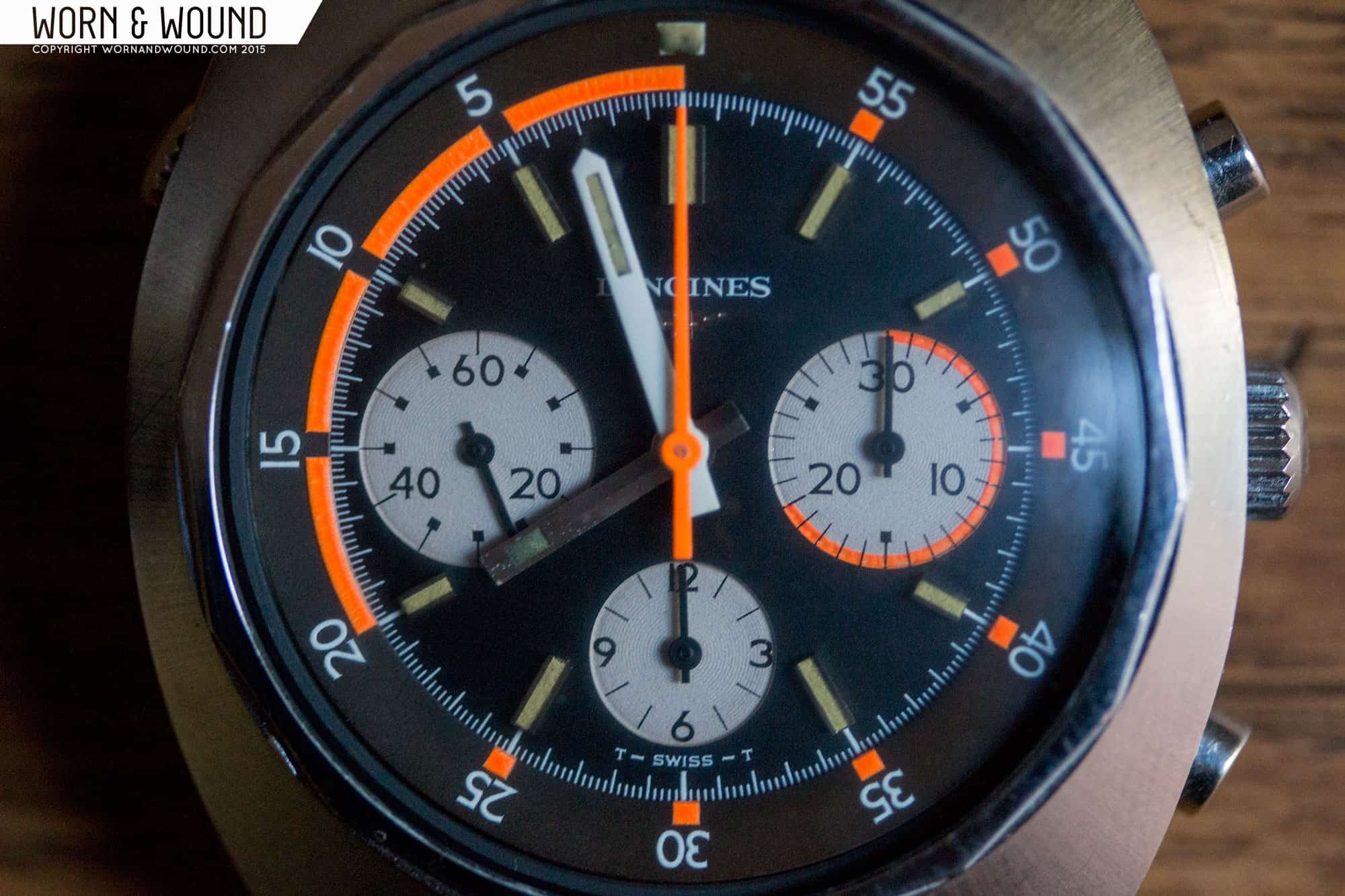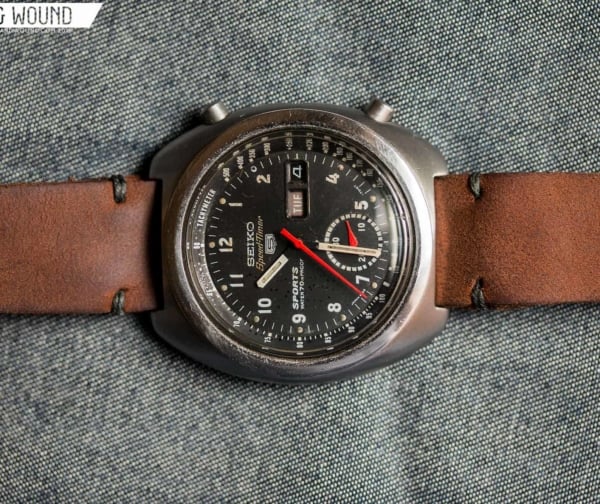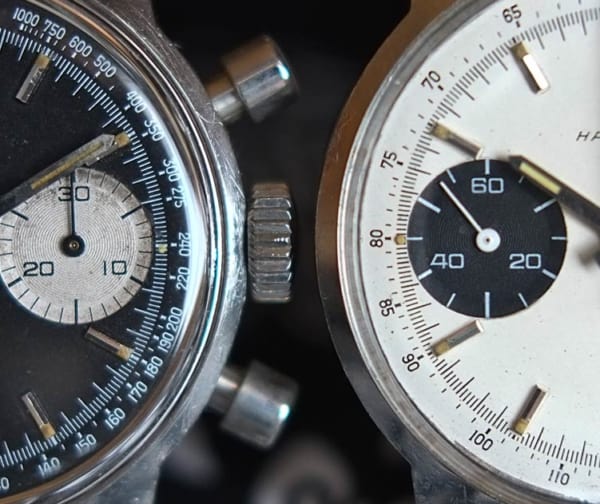What if I told you that you could get an over-sized colorful chronograph from a celebrated marque with a legendary movement and a super compressor case for under $3k. Impossible? Not with Longines’ chronograph diver.
Introduced in 1969 and produced in the 70’s, this was Longines’ top sport watch. It was available in three different configurations. Black dial with white subdials at 3 and 9 and a black subdial at 6, This variant is the first execution and comes with a rotating countdown bezel. They also made it with three white subdials on a black dial with a rotating inner bezel and a fixed bezel with a tachymeter scale for water skiing. Water skiing, you say? One of the Longines’ executives must have been a fan.
The Super Compressor case was introduced by E. Piqeurez SA (EPSA) in 1961. It was conceived as an improvement for the diving watch. Instead of rotating a bezel on the outside of the watch, which could get knocked about and throw your dive time off, the Super Compressor put the bezel on the inside, using a crown to rotate this internal bezel. The case back was made so that increased pressure of deep diving would actually tighten it. Super compressors are hot now, with the LeCoultre Polaris and Universal Polerouter Sub seeing dramatic increases.
The movement on these Longines chrono divers is the Valjoux 72. One of the grand old manual wind column wheel chronograph movements with a 3-6-9 subdial layout, the Valjoux 72 was used on Rolex’s Daytona until the 80’s. In other words, the expensive ones came with a Valjoux 72.
These hallowed specifications wouldn’t mean anything if the Longines wasn’t a super cool watch. Believe me, it is. The 43mm cushion case is ergonomically styled for extreme comfort on the wrist and features sunburst polishing and a screw-down domed mineral crystal. The dial and hands are terrific, as you would expect on a Longines. The movement is beautifully finished. The crown for the rotating bezel is nicely weighted, like a control on a high-end stereo.
Prices for the Longines chrono diver range from $1500 for one with a polished case, up to $2500 for an all-original example. Things to look for are the original sunburst polish, which is impossible to faithfully replicate and the domed screw down mineral glass to be in good condition. If the crystal has small scratches, they can be taken out of the glass by a lapidary, but deep gouges or chips will leave you looking for a piece of glass last produced over 40 years ago.
If you look at modern Longines, they have actually reissued this watch. It’s faithful to the original, but Longines has put a cheap piggyback ETA 2894-2 movement in it. This is a chronograph module screwed onto a base ETA movement. When it’s working, the minute counter hand on the chronograph creeps along at a slow pace, like a cheap Seiko. When it doesn’t, you throw the module out and get a new one for $300. This gets to the heart of the problem I have with Longines today. Originally in the same class as Omega and slightly better at times, Swatch builds and sells Longines as a lesser brand. They just don’t care about the details. Cases and dials have the usual Swatch group high quality, but movements are strictly low-end. I could have cried when I saw the reissue of the 30’s Czech Pilot with an automatic movement and date, but that’s another story.
So go out and look for the original. The Valjoux 72 beckons. You know with relationships and watches, it’s what’s on the inside that counts.









 Featured Videos
Featured Videos













